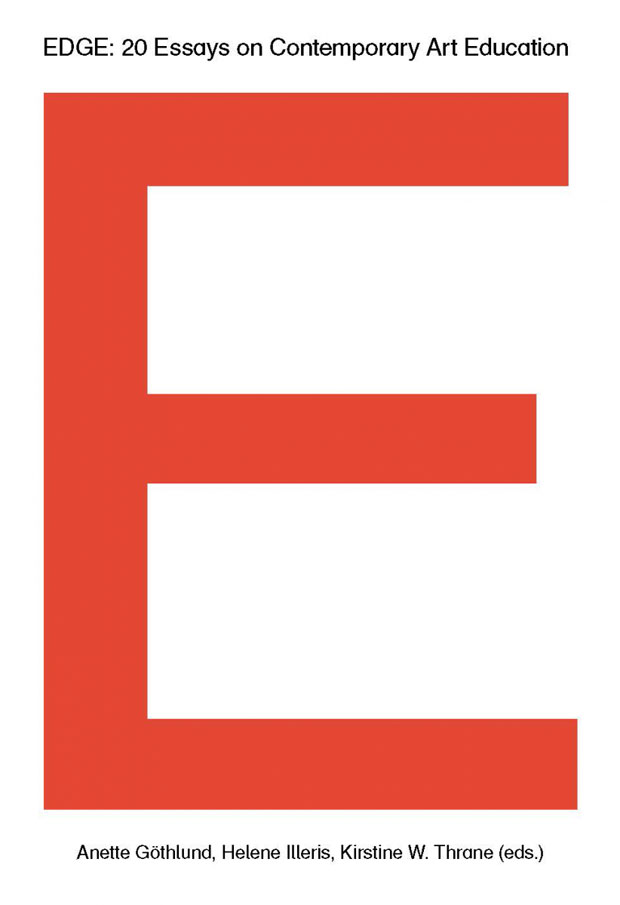Book launch lunch: "EDGE: 20 essays on contemporary art education"
Övrigt
Datum och tid
23 september 2015 kl 12:00 - 13:00
Plats och färdväg
Biblioteksgatan
Konstfack, LM Ericssons väg 14, Stockholm (Se karta)
Färdväg: Tunnelbana eller buss till Telefonplan

Welcome to a "book release" on Biblioteksgatan for the anthology "EDGE: 20 essays on contemporary art education" (Multivers, 2015).
By Anette Göthlund, Helene Illeris, Kirstine W. Thrane (eds.)
Co-editors: Gunnhildur Una Jónsdóttir and Taneli Tuovinen
Konstfack has participated in a NordForsk network CAVIC (Contemporary Art and Visual Culture in Education) 2010-2013. The network's mission has been to develop and strengthen Nordic (including the Baltic States) research and doctoral education in the interdisciplinary field of Visual art education, related to the area of contemporary art and visual culture.
The network has signed Swedish students and researchers from, Konstfack, Stockholm University, Linköping University and Umeå University. CAVIC network also sought and received funding from the Nordic Culture Fund to keep the research seminar "Arts-based research projects in nordic education: Creative collaborations, politics, potentialities", in Kristiansand (Norway) October 2014.
After this seminar the network's work could be completed with the publication of this anthology; EDGE.
Arrangör
Institutionen för bild- och slöjdpedagogik
In EDGE: 20 essays on contemporary art education you can explore texts and visuals that focus on contemporary social, cultural, aesthetic and philosophical issues in art education. The anthology is written by 30 Nordic and Baltic researchers, artists and teachers. An extensive introduction establishes vital themes such as relational art practices, arts-based research and visual culture, and through concrete examples from educational and artistic practices the essays explore art education both in theory and in practice. The authors adopt contemporary approaches such as the concept of experience, multimodality, disability studies, poetic function, museum studies, collaborative writing, social constructions, A/r/tography and performance ethnography. Together the 20 essays in EDGE offer new tools for teachers, researchers and artists to question and develop the role of art education in contemporary societies.
An edge provides a dividing line, separating here from there, the known from the unknown. The overall perspective of this book is based on a movement that has drawn the authors closer to the edges than to a centre for art education. Research is here understood as the production of new ways of sensing and understanding the world. Both in form and content you will experience curiosity when faced with the ambiguous and a lack of fear of failure. In this way EDGE aims to inhabit the field of art education by questioning it from within and by investigating how perspectives and themes can be explored in creative and innovative ways.